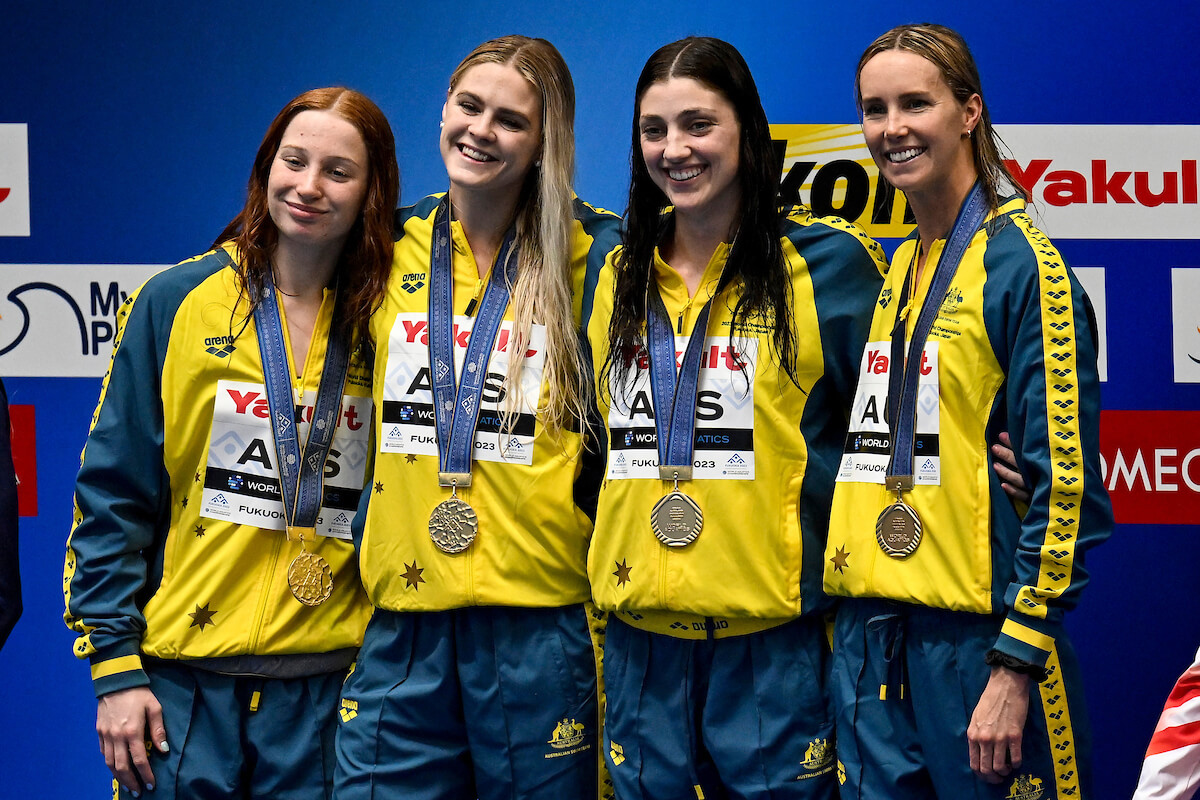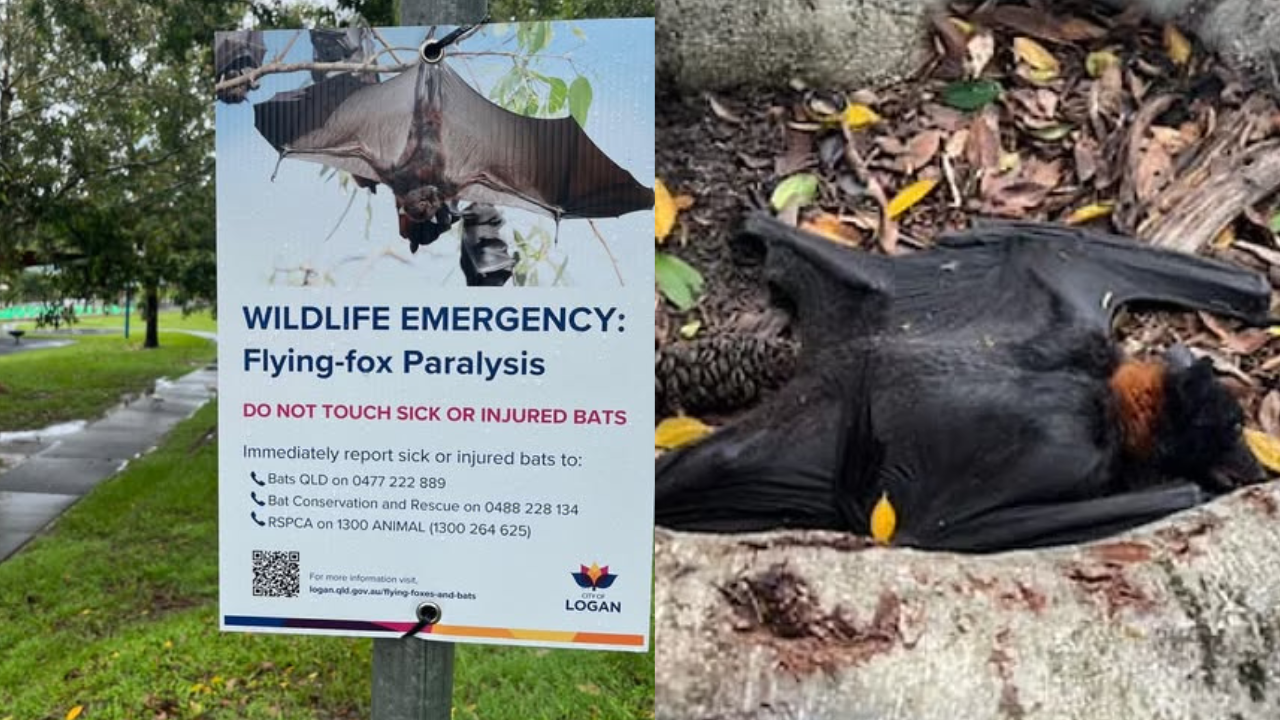Olympic Relay Analysis: Australian Women Favored For Fourth Straight 400 Free Relay Gold (Composite Times Included)

- by Admin
- June 27, 2024

Olympic Relay Analysis: Australian Women Favored For Fourth Straight 400 Free Relay Gold
The last time Australia was not victorious in the women’s 400 freestyle relay at a major international competition was 2017, when the United States won a tight World Championships final at a meet when Cate Campbell, then the world-record holder in the 100 freestyle, was absent. But otherwise, Australia has been the dominant force in this event since the 2012 Olympics, typically winning in dominant fashion. Campbell and younger sister Bronte Campbell have been the central forces in that winning streak while Emma McKeon has not missed an Aussie 400 free relay in more than a decade.
The streak is poised to continue in 2024 with a new generation of Australians leading the way: Mollie O’Callaghan is the two-time world champion in the 100 free and the favorite for Olympic gold in the event. She also won last year’s world title in the 200 free in world-record time, and she beat that mark at Australia’s Olympic Trials, only for Ariarne Titmus to swim even faster. In Tokyo, O’Callaghan won a trio of Olympic medals as a prelims relay swimmer in Tokyo, but O’Callaghan, now 20, has taken huge strides in the years since.
Shayna Jack, 25, made her first Olympic team after a controversial doping suspension kept her out of the Tokyo Games, and Meg Harris, 22, returns after she was the newcomer on the finals squad with McKeon and the two Campbell sisters in Tokyo. Cate missed out on a fifth Games in her latest comeback, but Bronte, now 30, impressed at the Trials by swimming as fast as 52.95. She placed fourth in the final to make the team. McKeon, also 30, finished sixth in the event at Trials to secure her spot on the Paris relay while world junior champion Olivia Wunsch took fifth.
Australia has four swimmers under 53 in the 100 free flat-start, one year after the team of O’Callaghan, Jack, Harris and McKeon smashed the world record by almost two seconds at the World Championships while winning gold by nearly four seconds. Still, there is a glimmer of hope for the United States in this one, a much stronger chance than an 800 free relay where Australia sits six seconds ahead based on an analysis of composite times.
Gretchen Walsh, Torri Huske, Kate Douglass & Simone Manuel will represent the United States in the 400 free relay in Paris — Photo Courtesy: Peter H. Bick
Two Americans have already gone below 53 seconds this year while two others sit right at the 53-second barrier. Kate Douglass was the U.S. Olympic Trials winner in 52.56 while Torri Huske swam as fast as 52.90, her lifetime best. Huske was the bronze medalist in the event at the 2022 World Championships while Douglass took fourth in 2023 and at this February’s global meet.
Joining them in the top-four at the American selection meet were Gretchen Walsh and Simone Manuel, with Walsh owning a best time of 53.13 and Manuel topping out in her comeback at 53.09, although she has been as quick as 52.04 earlier in her career. Based on their performances in other events in Indianapolis, both women are likely capable of going sub-53 in the right circumstances. Veteran Abbey Weitzeil is also an option for the U.S., as is Erika Connolly.
China will also be a threat here, with Yang Junxuan swimming a national-record time of 52.68 earlier this year while Cheng Yujie,Wu Qingfeng and
Zhang Yufei have all been 53-lows this year. That foursome set an Asian record of 3:32.40 in finishing less than a half-seconds behind the Americans at last year’s Worlds.
Canada, meanwhile, is a wild-card team in the mix, having won silver in this relay at the Tokyo Olympics and bronze five years earlier. The Canadians can count on Penny Oleksiak, the 2016 co-Olympic champion (along with Manuel) who is always capable of big relay splits, while Maggie Mac Neil, Mary-Sophie Harvey and multi-event teenage star Summer McIntosh figure to round on the squad, Kayla Sanchez now represents the Philippines while Taylor Ruck has struggled this year.
Here are the composite relays formed from the top-four times in each country in 2024:
Australia: 52.33 + 52.52 + 52.72 + 52.95 = 3:30.52
United States: 52.56 + 52.90 + 53.09 + 53.13 = 3:31.68
China: 52.68 + 53.25 + 53.27 + 53.27 = 3:32.47
Canada: 53.66 + 53.71 + 53.90 + 54.01 = 3:35.28
It’s hard to argue with Australia’s status as favorite for Paris, especially with O’Callaghan and Jack having not hit their best times yet this year. Still, the Americans cannot be discounted, and a scenario exists where the U.S. out-performs expectations with numerous swimmers hitting best times while one or two Australians struggle. That could produce a narrow finish with Olympic gold on the line.
However, that only happens if the Americans are perfect. If not, any chance of beating Australia is gone, and China will be right there, seeking to move up a slot on the podium.
More Olympic Relay Analysis:
The Latest News
-
December 27, 2024‘The champ’s back’: Seven-year first sees Smith join legends amid Nadal comparison
-
December 27, 2024Australian Flying Foxes And Lorikeets Mysteriously ‘Fall From The Sky’: Here’s Why
-
December 27, 2024‘Extremely lucky’: Waugh takes aim over Kohli sanction
-
December 27, 2024Moore Park advocates say consultancy fee nearing $1 million is a double-bogey – Australian Golf Digest
-
December 26, 2024Live: Smith century leads Australia to 474 as fast bowlers eye Indian top order




